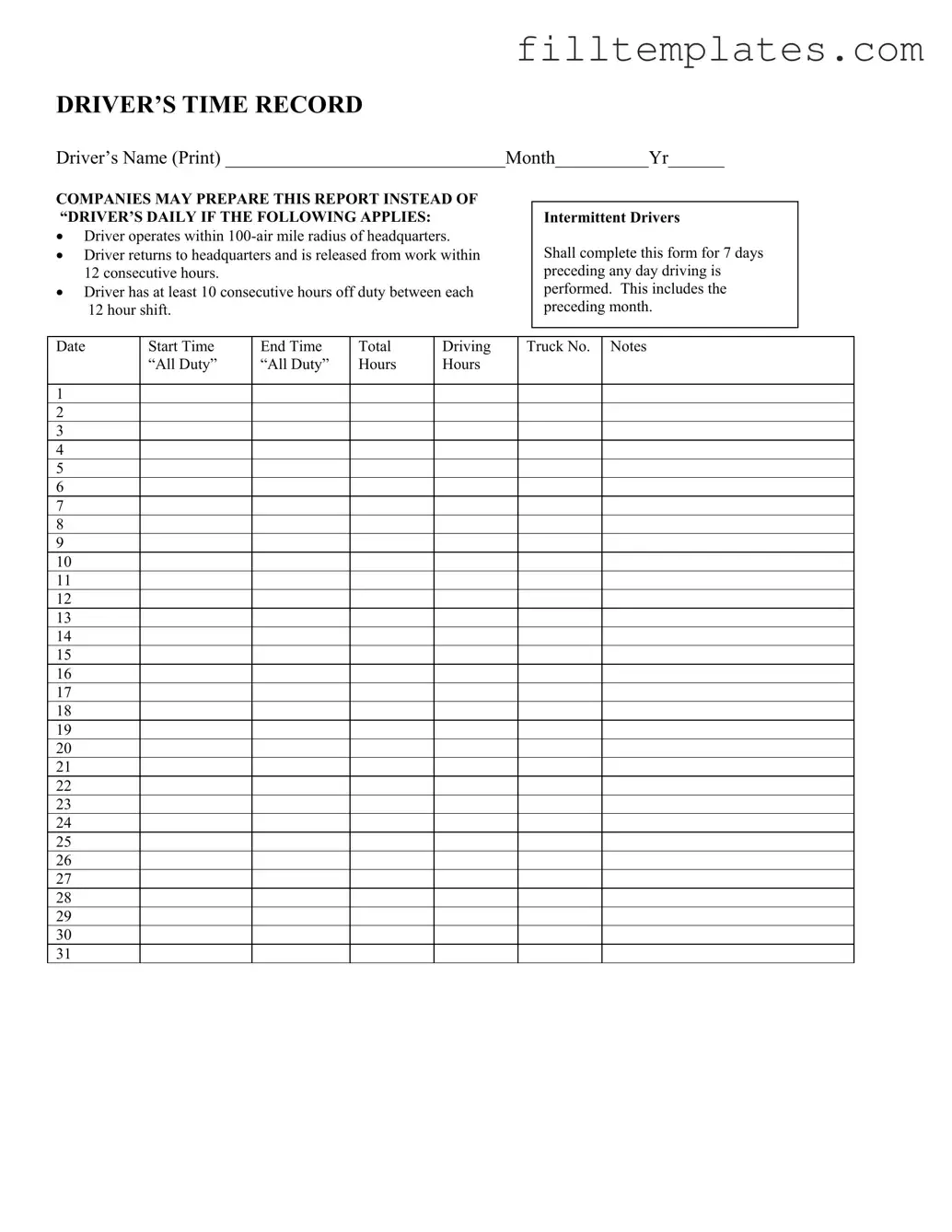The Driver Time Record form serves as a vital tool for tracking the hours worked by commercial drivers, ensuring compliance with regulations and promoting safety on the road. This form is particularly useful for drivers who operate within a 100-air mile radius of their headquarters and return home within 12 consecutive hours. To qualify for this simplified reporting, drivers must also have at least 10 consecutive hours off duty between each 12-hour shift. For intermittent drivers, the form must be completed for the seven days preceding any driving day, including the previous month. Each entry on the form requires the driver to document the date, start time, end time, total driving hours, and the truck number used. Additionally, a notes section allows for any relevant remarks about the day’s activities. By maintaining accurate records, drivers can demonstrate their adherence to work-hour regulations, which is essential for both their safety and that of others on the road.


